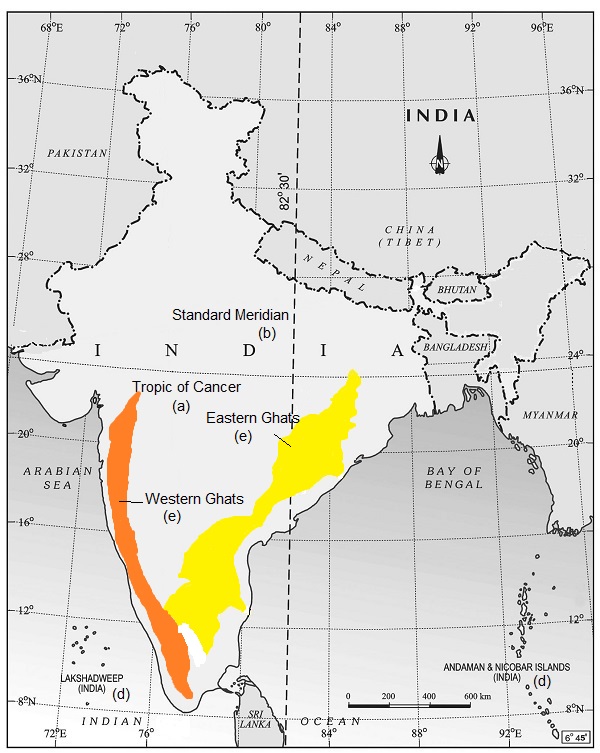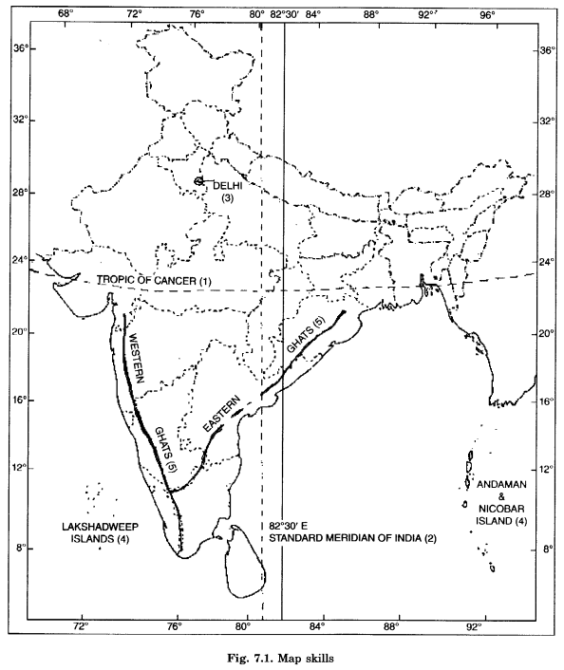GetStudySolution
Getstudysolution is an online educational platform that allows students to access quality educational services and study materials at no cost.
NCERT Solutions for class 6 Geography chapter 7 – Our Country – India
Back Exercise
1. Answer the following questions briefly.• The Great Himalayas or Himadri
• The Northern Great Plains
• The Coastal Plains
• The Peninsular Plains
• The Islands
The countries that share land boundaries with India are:
• Afghanistan
• Bangladesh
• Bhutan
• China
• Pakistan
• Nepal
• Myanmar
(g) Why is Lakshadweep known as a coral island?
Answer
Lakshdweep island is known as coral island because it has been made up of coral, which are skeletons of tiny marine animals called polyps.When the living polyps die, other polyps grow on top of their hard skeletons. They grow higher and higher and thus form coral islands.
1. On an outline map of India, mark the following.
(a) Tropic of Cancer
(b) Standard Meridian of India
(c) State in which you live
(d) Andaman Islands and Lakshadweep Islands
(e) Western Ghats and Eastern Ghats
Answer

In-Text Questions
Question 1.
If we divide the world into Eastern and Western Hemispheres which hemisphere would India belong to?
Answer:
Eastern Hemisphere.
Question 2.
Find out names of these countries (neighbouring countries) from Figure 7.1 of the Textbook. How many of these countries do not have access to any ocean or sea?

Answer:
Seven neighbouring countries are:
- Afghanistan
- Pakistan
- China
- Nepal
- Bhutan
- Bangladesh
- Myanmar
The following three countries do not have access to ocean or sea: They are
- Afghanistan
- Nepal
- Bhutan.
Question 3.
Do you know which group of islands were affected by the Tsunami in 2004? Find out through newspaper reports and by speaking to the people how in different ways people faced this challenge when Tsunami struck the Indian coast.
Answer:
Yes, the Andaman and the Nicobar Islands.
People faced the challenge in the following manner:
- Some people reached high grounds.
- Some climbed up the trees.
- Some remained clung to the tree trunks.
- Some climbed up the upper storey of the house.
- Some swam in the rising waves.
- Hundreds of thousands perished in the waves.